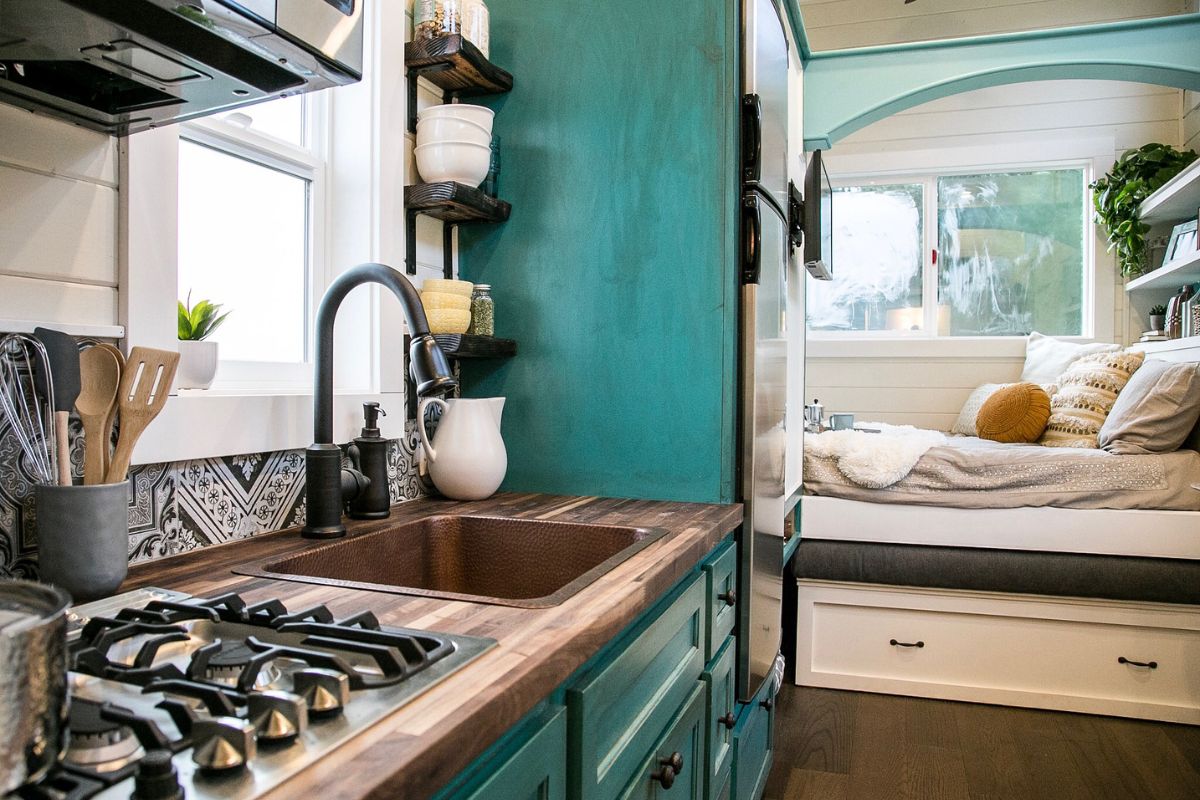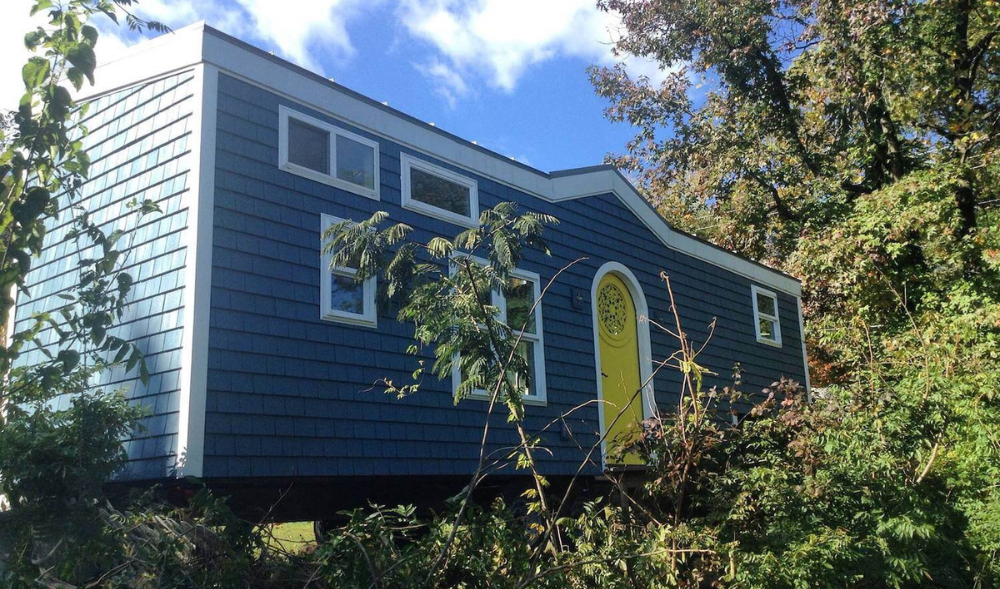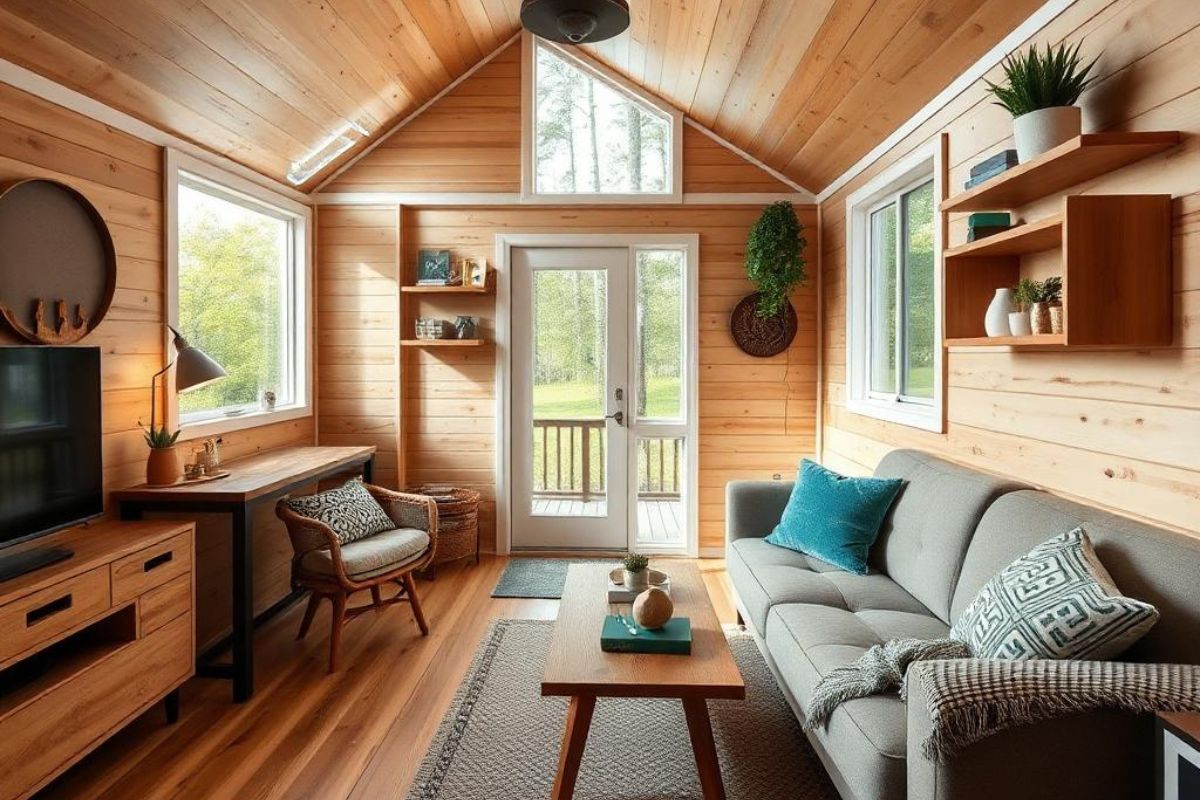Embarking on a journey into the world of tiny home living reveals a lifestyle brimming with charm and creativity. You’ll find that tiny home designs perfectly capture a sense of coziness while maintaining functionality, offering innovative tiny house design ideas tailored to your needs. Affordable tiny homes provide a solution that combines beauty with practicality, often using well-drafted tiny home construction plans. With tiny house interiors, every inch is carefully considered to maximize space and comfort, crafting an inviting atmosphere. As you explore how to build a tiny house, you'll encounter exciting opportunities to express your style, whether through personalized tiny home blueprints or selecting the best tiny house kits. Whether stationed or exploring on the go with tiny house on wheels plans, the diverse communities welcoming this lifestyle embody a rich tapestry of sustainable living and creativity.

Introduction to Tiny Homes
What draws people towards the unique lifestyle of tiny homes? For many, the allure lies in their simplicity and efficiency. Tiny house living allows you to embrace a minimalist ethos while experiencing a world of vibrant designs and rich functionalities. With tiny home construction plans at the helm, you embark on a creative journey, crafting spaces that cater directly to your personal tastes and needs.
Tiny homes are more than just a trend; they are a practical solution to housing challenges. Affordable tiny homes offer a way to pursue financial freedom without sacrificing comfort. Smart tiny house interior designs make every square foot count, transforming compact spaces into harmonious living environments that reflect your lifestyle and preferences.
When considering how to build a tiny house, you’ll find an array of resources and options. From meticulously crafted tiny home blueprints to choosing the best tiny house kits, each step is an opportunity to create a living space uniquely yours. The freedom of customization ensures that your home is a seamless extension of your personality.
Many enthusiasts opt for tiny house on wheels plans, allowing you to blend adventure with domestic coziness. The mobility of such designs adds a layer of flexibility to your lifestyle, expanding horizons while keeping the comforts of home close. It’s a distinctive way to explore new places without parting from familiar surroundings.
Diverse tiny home designs cater to different tastes and needs. Whether you prefer sleek modern aesthetics or rustic charm, the variety of tiny house design ideas ensures a perfect fit for everyone. These homes prove that limited space doesn’t equate to limited style, offering an enduring appeal to those who value creativity, innovation, and practicality.

Benefits of Living in a Tiny Home
Living in a tiny home can be likened to living inside a well-crafted piece of art. Just like a finely designed painting, it prioritizes space and aesthetics, creating a harmonious blend of form and function. In tiny home living, every detail matters, ensuring comfort and efficiency in even the smallest spaces, which allows you to make the most of your environment.
One significant advantage of tiny homes is their affordability. Affordable tiny homes lighten the financial load, offering you an opportunity to invest in experiences rather than mortgage payments. By utilizing creative tiny house interior designs and tiny home blueprints, you can optimize living spaces without overspending, making home ownership accessible to many.
Mobility is another appealing benefit of tiny homes. Featuring tiny house on wheels plans, these homes provide the freedom to travel while retaining the comforts of a personalized living space. The ability to relocate with ease expands possibilities and offers a flexible living solution that suits a dynamic lifestyle without restrictions.
Additionally, tiny homes promote sustainable living. With reduced energy consumption and environmental impact, they embody eco-friendly principles. You engage in a lifestyle that not only fits your space but also supports conservation efforts. By exploring how to build a tiny house with sustainability in mind, you pave the way for a greener future, making a positive impact on the planet.

Essential Features of a Tiny Home
Tiny homes incorporate essential features that maximize both utility and creativity, transforming limited space into a functional haven. Clever use of storage solutions is key, allowing you to seamlessly tuck away belongings in multipurpose furniture and hidden compartments. This thoughtful design approach makes everyday living both practical and aesthetically pleasing, ensuring that everything has its place.
Compact yet comprehensive kitchen designs are a hallmark of tiny home living. By utilizing space-saving appliances and layout efficiencies, you can enjoy modern convenience in a fraction of the space. These efficient cooking areas reflect tiny home design ideas that marry form with function, providing a culinary space that doesn’t compromise on quality.
With multifunctional living areas, tiny homes support versatile lifestyles. Areas that double as workspaces or leisure zones highlight the ingenuity of tiny house interior designs. In the next few years, these innovative solutions are likely to become even more sophisticated, seamlessly blending technology and comfort for an unprecedented living experience.
Sustainable features are pivotal in the context of tiny homes. Incorporating renewable energy systems and eco-friendly materials, these homes are pioneers in green construction. As you explore how to build a tiny house, the emphasis is on creating a habitat that aligns with environmental stewardship, meeting both current needs and future aspirations.

Floor Plan Design Tips
Designing the floor plan of a tiny home requires creativity and precision. Start by focusing on open space; it encourages a seamless flow between areas and enhances the feeling of spaciousness. Positioning key elements like necessary appliances strategically enhances practicality and ensures efficient movement.
Use multi-functional furniture to maximize utility in your tiny home designs. According to recent studies, adaptable spaces can significantly increase perceived comfort and usability in restricted environments. Implementing these scientifically-backed tiny house design ideas ensures you make the most out of every square foot.
Natural light plays a crucial role in floor plan design. By incorporating large windows or skylights, you bring in an abundance of light, making the interior feel larger and more welcoming. This approach not only boosts mood but also reduces reliance on artificial lighting, aligning with sustainable tiny home construction plans.
Including outdoor extensions can augment living space effectively. Design features like patios or decks open up your tiny home to the outdoors, creating additional room for relaxation or entertainment. These plans enhance the connection with nature while supporting a versatile lifestyle, making the most out of the available area in your home.

Customizing Your Tiny Home
Customizing your tiny home offers endless possibilities to reflect your personality and lifestyle preferences. Begin by selecting a layout that resonates with your daily activities. Consider your needs for kitchen space, relaxation areas, and work zones. Thoughtful tiny home blueprints allow you to align practical necessities with creative tiny house design ideas, ensuring a personalized fit.
Your choice of materials greatly influences the atmosphere of your tiny home. Opt for sustainable and quality materials that enhance both aesthetics and durability. Incorporating natural elements like wood and stone can create a warm and inviting ambiance. Personalized tiny house interior designs not only ensure longevity but also align with eco-conscious living.
Color choices are paramount when it comes to customization. Light hues can expand space visually, while bold colors may serve as focal points or reflect personal style. Customizing with color dynamics not only imbues your home with a personal touch but also plays a crucial role in mood and spatial perception.
One unpopular opinion about customizing tiny homes is that you shouldn’t necessarily eliminate luxurious elements for the sake of minimalism. When building a tiny house, incorporating a few indulgent touches like high-end finishes or custom fixtures can enhance the living experience without adding clutter. Luxury doesn’t have to mean excess; it can be about selecting high-quality, impactful pieces.
Technology integration is another avenue for customization. Smart home systems can weave innovation into daily life, enhancing convenience and efficiency. Whether through automated lighting, climate control, or security systems, these additions elevate your tiny house living experience. By integrating technology strategically, you can enjoy advanced comforts tailored by the best tiny house kits tailored to modern lifestyles.

Common Challenges and Solutions
Living in a tiny home presents unique challenges, primarily around space constraints and storage. Efficient use of space is crucial to ensure comfort and functionality. By integrating clever storage solutions and multi-purpose furniture, you can optimize your tiny house interior designs to cater to everyday needs and lifestyle preferences without feeling cramped.
One of the significant hurdles is finding suitable land or securing permits for your tiny home. This can sometimes deter those interested in tiny house living. Research local zoning laws and consider communities that welcome tiny homes. Collaborating with professionals experienced in tiny home construction plans can help navigate legal complexities and hasten the process.
Utilities and sustainability also present challenges within the tiny home lifestyle. Ensuring a steady water supply, waste management, and power can be daunting. Solutions include installing solar panels or composting toilets, which align with the environmental advantages of tiny home designs. These innovations contribute to a more sustainable and self-sufficient lifestyle.
Looking ahead, tiny home living is expected to evolve in ways that address these common challenges. Advances in sustainable technology and changes in urban planning are likely to make tiny homes more accessible and widely accepted. As more people embrace this movement, communal living configurations and tech-driven solutions will further enhance the practicality and appeal of tiny home life.






Share: